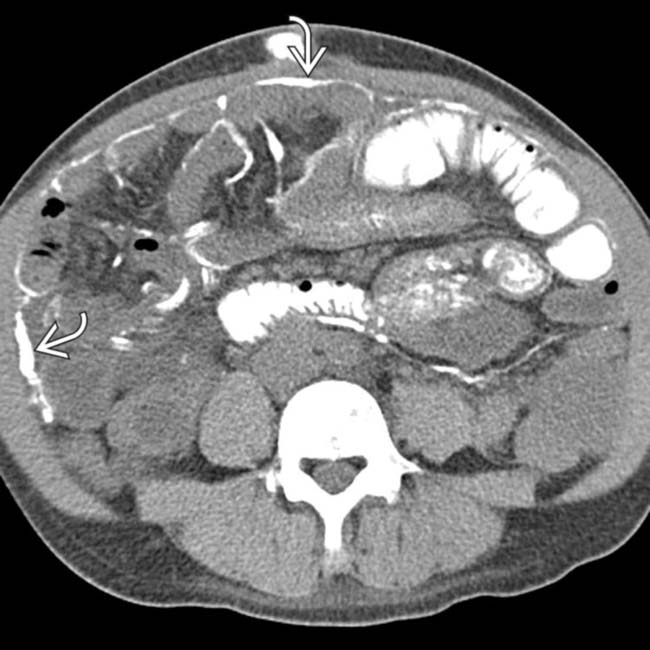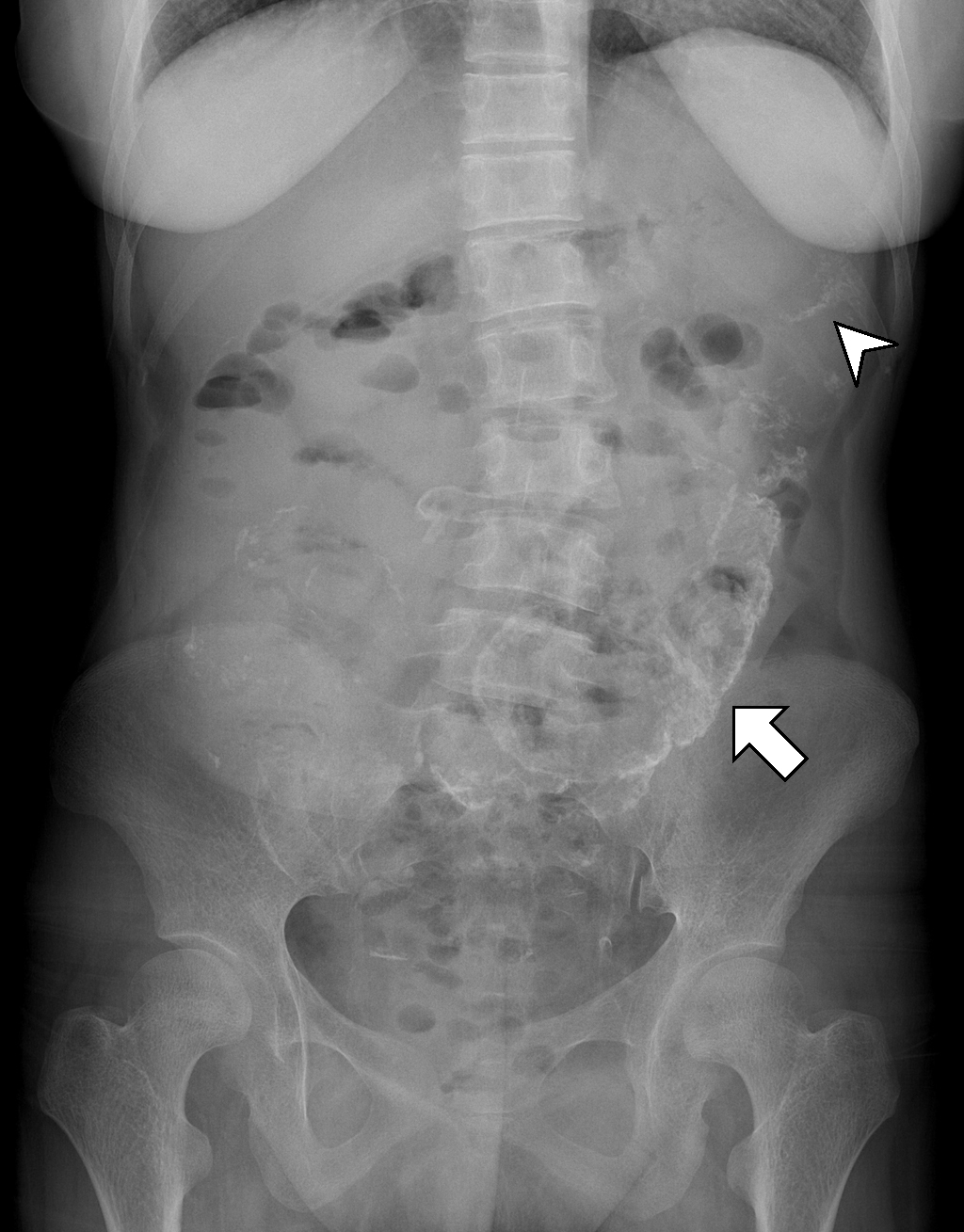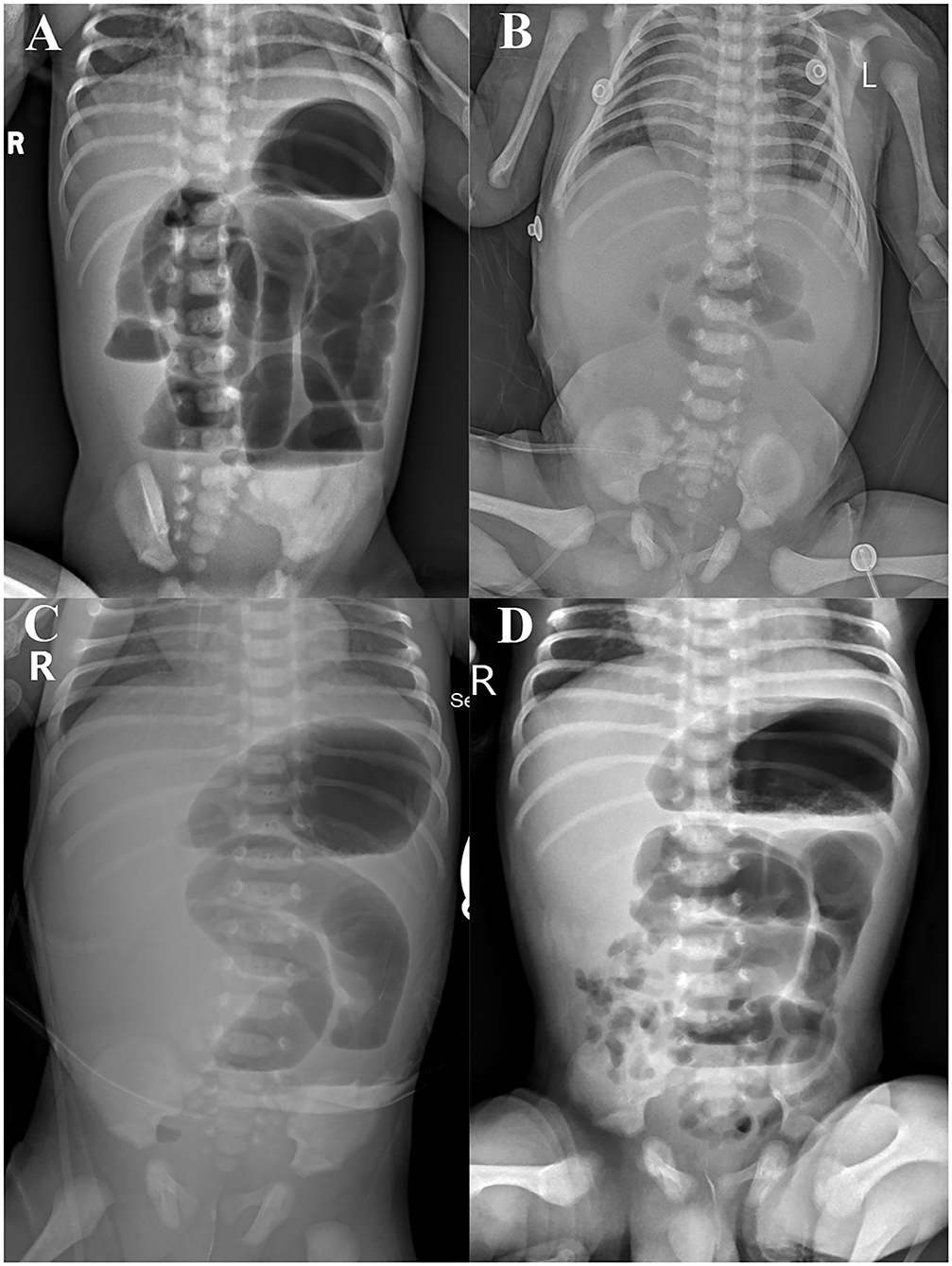
Sclerosing encapsulated peritonitis typical imaging findings for easy
Peritonitis is an infection of the inner lining of your tummy. Left untreated, it can become life threatening. Check if you have peritonitis. Symptoms of peritonitis include: tummy pain; a very high temperature, or feeling hot and shivery; a rapid heartbeat (your heart is beating more quickly than normal) not being able to pee or peeing much.

Sclerosing encapsulated peritonitis typical imaging findings for easy
Peritonitis is a redness and swelling (inflammation) of the tissue that lines your belly or abdomen. This tissue is called the peritoneum. It can be a serious, deadly disease. What causes peritonitis? Peritonitis is caused by an infection. Bacteria can enter the lining of your belly from a hole in your GI (gastrointestinal) tract.

PERFORATION HOW TO SPOT FREE INTRAPERITONEAL AIR ON ABDOMINAL
Age: 5 years Gender: Female ct Multiple loculated peritoneal collections with a thick enhancing wall, most of which show gas fluid levels, some of the collections are interconnecting. Largest loculated collection in the recto-uterine pouch measures 5 x 5 x 3.7 cm. A small subcapsular hepatic collection is also noted.

Encapsulating Peritoneal Sclerosis The Abdominal Cocoon RadioGraphics
Definitions • Infectious or inflammatory process involving peritoneum or peritoneal cavity IMAGING General Features • Best diagnostic clue Ascites and omental/mesenteric fat stranding with symmetric, smooth enhancement and thickening of peritoneal lining • Location Peritoneal surface, mesentery, and omentum • Size

Sclerosing encapsulated peritonitis typical imaging findings for easy
Age: 17 years Gender: Male ct Axial C+ arterial phase Coronal C+ portal venous phase Sagittal C+ portal venous phase Axial C+ delayed MDCT reveals a large amount of high density fluid in the peritoneal cavity associated with diffuse thickening of peritoneal lining. There is no evidence of free air or leak of oral contrast material.

Peritonitis Image
Finally, imaging studies, such as X-rays or CT scans, can show perforation or other trauma in the gastrointestinal tract. If peritonitis is associated with peritoneal dialysis, a physical exam assessing signs and symptoms may be enough to diagnose the condition. In particular, cloudy dialysis fluid is highly indicative of peritonitis.
Neonate, perforation with meconium peritonitis radRounds Radiology
Peritonitis refers to any form inflammation of the peritoneum. Pathology Peritonitis can be be localized or generalized, and may be infective or non-infective in etiology: infective peritonitis bacterial peritonitis primary: from diffuse bacterial infection of the peritoneal cavity occurring without loss of integrity of the digestive tract.

Meconium peritonitis an interesting entity BMJ Case Reports
Spontaneous bacterial peritonitis (SBP) is a potentially life-threatening complication of ascites diagnosed by paracentesis. We determined predictors of SBP to facilitate patient selection. The 301 paracenteses performed in 119 patients (51 women, 68 men) from July to November 2015 were retrospectively reviewed.

Pneumoperitoneum Image
Peritonitis, an inflammation of the peritoneum, is a life-threatening acute surgical emergency. It presents with severe abdominal pain and is a significant cause of morbidity and mortality ranging from 10%-60% in surgical settings [ 1 ].

Peritonitis Radiology Key
treatment Diagnosis To diagnose peritonitis, your health care provider talks with you about your medical history and gives you a physical exam. Your symptoms alone may be enough for your provider to diagnose the condition if your peritonitis is linked to peritoneal dialysis.

Meconium peritonitis Radiology Case
Peritonitis is the reaction of the peritoneum against bacterial contamination or intrinsic chemical toxins in the abdominal cavity. This response is initially characterized by congestion and increased secretion of fluid and macrophages into the peritoneal cavity.

Secondary peritonitis chest x ray wikidoc
This Osmosis High-Yield Note provides an overview of Peritoneal pathology essentials. All Osmosis Notes are clearly laid-out and contain striking images, tables, and diagrams to help visual learners understand complex topics quickly and efficiently. Find more information about Peritoneal pathology: Peritonitis. Pneumoperitoneum.

Secondary peritonitis chest x ray wikidoc
The treatment of acute peritonitis at the bedside with x-ray was begun by us in 1934, and our early experience was reported before the section on Radiology of the American Medical Association in June 1938. In the last three years we have added several cases to the series presented at that time, and this new report, though leaving many questions unanswered, will give the reasons why we still.

EPOS™ C2408
Spontaneous bacterial peritonitis (SBP) is defined as an ascitic fluid infection without an evident intra-abdominal surgically treatable source [ 1 ]. The presence of SBP, which almost always occurs in patients with cirrhosis and ascites, is suspected because of suggestive signs and symptoms, such as fever, abdominal pain, or altered mental.

Frontiers Meconium Peritonitis, Intestinal Atresia Combined With
Primary peritonitis is an inflammation of the peritoneum by an extraperitoneal source, frequently occurring from hematogen dissemination. It occurs in children and adults and can endanger life, particularly in patients who have cirrhosis or in children who have nephrosis.

Peritoneum and Retroperitoneum Radiology Key
anorexia, or loss of appetite excessive thirst fatigue fever and chills If you're on peritoneal dialysis, your dialysis fluid may appear cloudy or have white flecks or clumps in it. You may also.